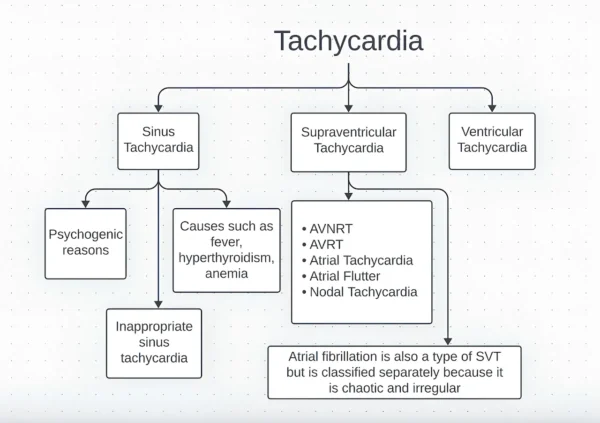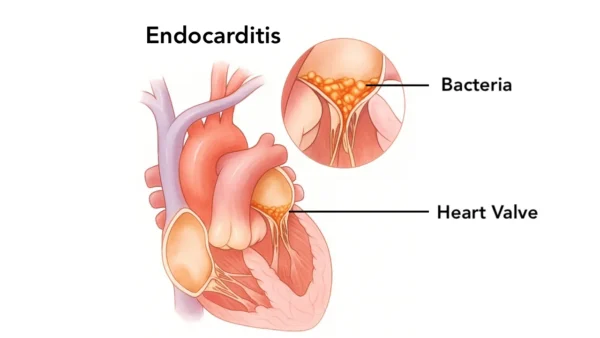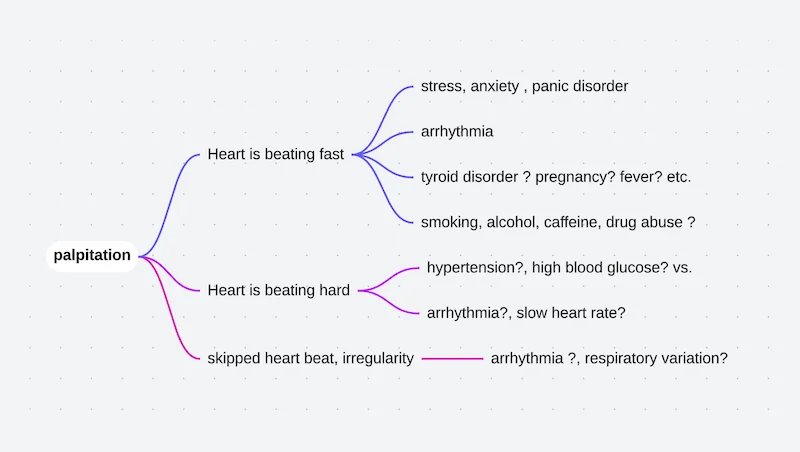Deep vein thrombosis (DVT) occurs when a blood clot forms in a deep vein, most commonly in the legs or pelvis. These clots develop when blood flow slows, vessels are injured, or the body’s natural clotting tendency increases. DVT can be silent or cause leg swelling and pain, but the most dangerous complication is when the clot breaks off and travels to the lungs, causing a pulmonary embolism. Recognizing risk factors, symptoms, and the importance of early treatment is critical because timely care prevents serious and potentially life-threatening complications.
Overview
Deep vein thrombosis is a condition where a blood clot forms in a deep vein, typically in the calf, thigh, or pelvis. These veins are responsible for returning blood to the heart, and when a clot forms, it partially or completely blocks that flow. DVT is a major part of venous thromboembolism (VTE), which includes both DVT and pulmonary embolism.
The clot can grow silently, sometimes causing no symptoms at all. In other cases, it causes swelling, pain, warmth, or discoloration in the affected limb. The biggest danger is that the clot may break free and travel through the bloodstream to the lungs, becoming a pulmonary embolism, which can be life-threatening.
DVT is common and affects people of all ages. Certain situations—long travel, surgery, immobility, pregnancy, cancer, or inherited clotting tendencies—significantly increase the risk. Early diagnosis and treatment with anticoagulants greatly reduce the risk of both PE and long-term vein damage.
Causes
Deep vein thrombosis develops when three key factors—known as Virchow’s triad—come together: slowed blood flow, injury to the vein wall, and increased tendency to clot.
- A major contributor is prolonged immobility. Long flights, extended car rides, prolonged hospital stays, or being bedridden reduce the pumping action of leg muscles, allowing blood to pool and thicken.
- Surgery, especially orthopedic, pelvic, abdominal, or cancer surgeries, greatly increases the risk because tissue injury and inflammation activate clotting, and postoperative immobility slows blood flow.
- Cancer and many types of chemotherapy increase clotting tendency. Cancer patients have a significantly higher risk of both DVT and pulmonary embolism.
- Pregnancy and the postpartum period naturally increase clotting. Hormonal birth control and hormone replacement therapy can also raise risk.
- Trauma, such as fractures or muscle injuries, can trigger clots by damaging blood vessels.
- Advanced age, obesity, smoking, dehydration, and chronic illnesses like heart failure or inflammatory diseases also contribute.
- Inherited clotting disorders—such as factor V Leiden or prothrombin gene mutation—dramatically increase the likelihood of clots, sometimes even in young, otherwise healthy individuals.
- Despite thorough evaluation, some DVTs occur without a clear trigger, especially in people with subtle or undiagnosed clotting abnormalities.
Symptoms
Symptoms depend on the size and location of the clot. Many people with DVT have only mild symptoms—or none at all.
- A common symptom is leg swelling, usually in one leg. The swelling may develop gradually or suddenly.
- Pain or tenderness in the calf or thigh is frequent. The discomfort may start as a cramp or a feeling of tightness and often worsens when standing or walking.
- The skin over the affected area may feel warm, appear reddened, or become discolored.
- Some people feel heaviness or aching in the limb.
- In extensive clots, symptoms may be more severe, with significant swelling, bluish discoloration, or intense pain. Rarely, this can threaten blood flow to the limb and become a medical emergency.
- Many people have DVT without clear symptoms, which is why recognizing risk factors is just as important as watching for leg changes.
Diagnosis
Diagnosing DVT requires combining clinical evaluation with imaging tests.
- Doctors begin by assessing your symptoms, medical history, and risk factors. Based on this information, a clinical scoring system may be used to estimate your likelihood of having DVT.
- The most accurate and commonly used test is a venous Doppler ultrasound, which shows blood flow through the veins and identifies clots.
- A D-dimer blood test is often used in low-risk patients; a normal result can virtually rule out DVT.
- In unclear or complex cases, CT or MRI venography may be used for more detailed imaging, especially for pelvic or abdominal vein thrombosis.
- If DVT is confirmed, additional testing may be done to look for underlying causes, especially in young patients or those with recurrent clots.
Treatment
Treatment focuses on stopping clot growth, preventing the clot from traveling to the lungs, and reducing long-term complications.
- The main therapy is anticoagulant medications, which thin the blood and prevent further clotting. These may include heparin, warfarin, or direct oral anticoagulants. Anticoagulants do not dissolve the existing clot but allow the body to gradually break it down.
- Treatment usually continues for at least three to six months, depending on the cause and severity of the clot.
- People with large clots or severe symptoms may require thrombolytic therapy, which uses medications to dissolve the clot quickly, though this is reserved for select cases due to bleeding risk.
- Catheter-based procedures can remove or break up clots, particularly in extensive DVT threatening the limb or in severe pelvic vein thrombosis.
- If anticoagulants cannot be used—for example, due to a high bleeding risk—an inferior vena cava (IVC) filter may be placed to catch clots before they reach the lungs.
- Compression stockings may help reduce swelling and lower the risk of developing post-thrombotic syndrome, a long-term complication marked by chronic leg pain and swelling.
What Happens If Left Untreated
Untreated DVT can lead to serious and sometimes life-threatening complications.
- The most dangerous is pulmonary embolism, which can occur suddenly if the clot breaks loose and travels to the lungs.
- Even if PE does not occur, untreated DVT can damage vein valves, leading to post-thrombotic syndrome, a chronic condition with persistent leg pain, swelling, heaviness, skin discoloration, and sometimes ulceration. This can develop months or years after the initial clot.
- Large untreated clots can severely impair blood flow in the limb, causing lasting tissue damage.
Because of these risks, prompt diagnosis and treatment are essential.
What to Watch For
- New swelling in one leg—particularly if accompanied by warmth, redness, or pain—should raise concern for DVT, especially if you recently had surgery, traveled long distances, or were immobilized.
- Unexplained calf pain, tenderness to touch, or a sensation of tightness in the leg are warning signs.
- Shortness of breath, chest pain, rapid heartbeat, or coughing up blood may signal that the clot has traveled to the lungs. These symptoms require emergency medical evaluation.
- People with cancer, clotting disorders, or a history of DVT or PE should be especially vigilant for early symptoms.
Living with Deep Vein Thrombosis
Long-term management focuses on preventing recurrence and reducing chronic symptoms.
- Taking anticoagulants exactly as prescribed is essential. Skipping doses increases the risk of new clots. Regular blood tests may be needed depending on which medication is used.
- Staying active, walking regularly, and avoiding prolonged immobility help maintain healthy blood flow. During long travel, frequent leg movement and hydration reduce risk.
- Compression stockings may help with swelling and prevent long-term vein problems.
- Maintaining a healthy weight, quitting smoking, and managing chronic conditions like diabetes or heart failure also reduce recurrence risk.
- People with recurrent or unprovoked clots may need long-term or lifelong anticoagulation.
- Follow-up appointments help monitor recovery, medication effects, and potential complications.
Key Points
- Deep vein thrombosis is a blood clot in a deep vein, usually in the legs or pelvis.
- Symptoms can range from mild discomfort to significant swelling and pain. Some people have no symptoms at all.
- Diagnosis relies on ultrasound and, when appropriate, D-dimer testing.
- Treatment centers on anticoagulation, clot-dissolving therapy in select cases, and prevention of pulmonary embolism.
- Untreated DVT can lead to pulmonary embolism and long-term vein damage known as post-thrombotic syndrome.
- Prevention includes staying active, avoiding prolonged immobility, managing risk factors, and taking medications as prescribed.
References: https://www.ncbi.nlm.nih.gov/books/NBK507708/






